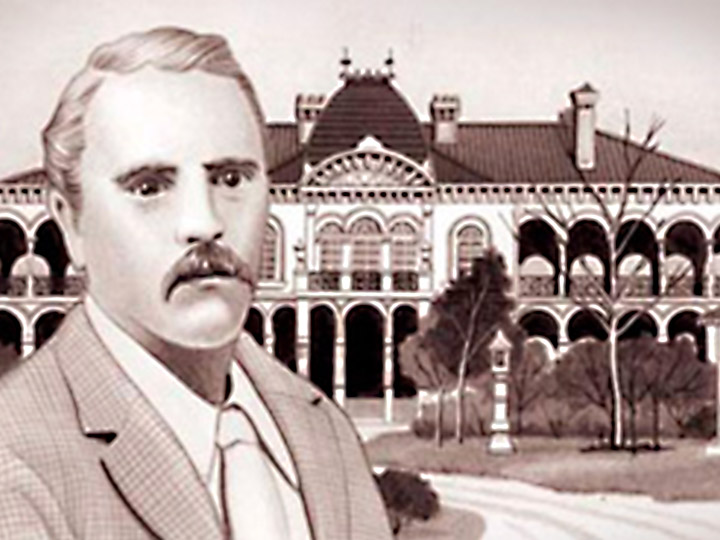
Josiah Condor
The Englishman Who Designed MitsubishiJosiah Condor

Expatriate Westerners in Japan contributed greatly to the nation's rapid modernization in the late 1800s. Some of those Westerners worked closely with the young Mitsubishi organization. Here, we take a look at the English architect Josiah Conder.
Born near the Thames River in 1852, Conder studied architecture in Victorian London. He displayed impressive talent and earned the Royal Institute of British Architects' Thorne Award, a prestigious honor for young architects. Soon after receiving that recognition, Conder accepted an invitation to teach in Japan.
Evidence suggests that the trading company Jardine, Matheson & Co. was instrumental in securing the invitation for the young prodigy in 1877. Thomas Glover--a Mitsubishi advisor and former Jardine, Matheson employee--appears to have introduced Conder to Mitsubishi.
Western-style buildings were in vogue, and Conder fulfilled several commissions under contract with the Meiji government. Representative of his work was the Rokumeikan hall, where Meiji-era elite gathered for grand balls. His design for the Rokumeikan satisfied the demand for Western motifs. But like most Conder commissions, it was an eclectic creation that combined Occidental themes subtly with Islamic and Oriental elements.
Conder designed private, as well as public, structures. Mitsubishi's founding family, the Iwasakis, employed him for some of their luxurious residences. Conder's first Mitsubishi job was an 1886 commission in Tokyo for the Fukagawa mansion of the second Mitsubishi president, Yanosuke Iwasaki. That elegant residence was the first truly European-style home in Japan.
Conder also designed a luxurious Tokyo home for Hisaya Iwasaki, the third Mitsubishi president. The Iwasakis also commissioned him to design the Kaitokaku, a palatial hilltop villa in Tokyo where Yanosuke spent his final months. The Mitsubishi companies continue to use the Kaitokaku for special events. Conder even designed the mausoleum where Yanosuke and the fourth Mitsubishi president, Koyata Iwasaki, rest.
The man known later as the father of modern Japanese architecture became a Mitsubishi advisor in 1887. He was the chief architect of the Mitsubishi No. 1 Building in 1894. That three-story brick structure was Japan's first modern office building. Conder oversaw the design and construction of the Mitsubishi No. 2 and No. 3 brick buildings over the next two years. Those structures inspired the Marunouchi district's nickname, "a block of London."
Conder handled commissions for clients besides Mitsubishi and the Iwasakis, including the powerful Mitsui and Furukawa groups. Conder also oversaw the construction of the Nicolai Cathedral near the Russian embassy in Tokyo. Unfulfilled Conder designs include a playhouse that would have been the first in Japan and an Iwasaki art gallery for downtown Tokyo.
More than an architect
Conder was a scholar, as well as an architect, and wrote books about Japan. His Landscape Gardening in Japan and The Floral Art of Japan were popular in Europe. While Japan was looking towards the west and forsaking its own culture, the foreigner Conder was absorbing that culture. He was an aficionado of Kabuki theater and Japanese art. Conder studied painting under the master painter Kyosai Kawanabe, one of the most popular artists of the day. He also studied Japanese traditional dance, a pastime through which he met his wife, Kume.
Much of Conder's later architectural influence was through his students. Most of the leading Meiji-era architects were Conder proteges. Their works include Tokyo Station and the recently retired Mitsubishi landmark, the Marunouchi Building.
The man who brought modern architecture to Japan returned to England twice. But the lure of the land of the rising sun always proved irresistible. He passed away in 1920 at his Tokyo home.




